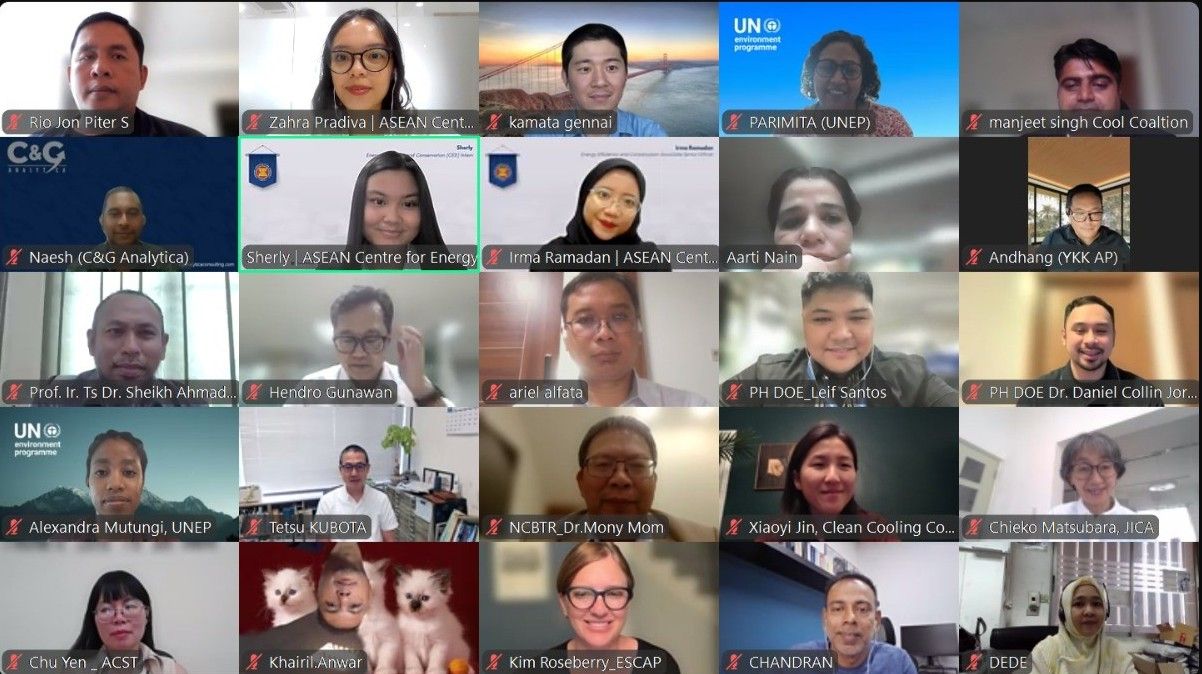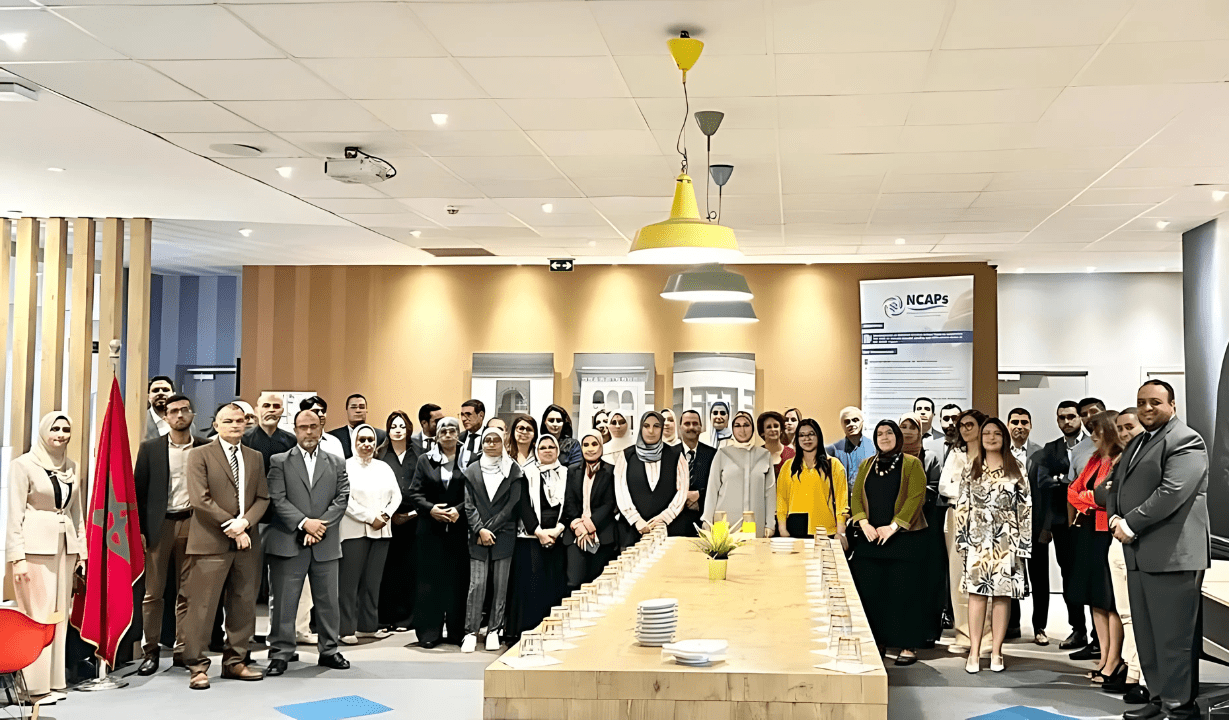Energy demand for space cooling has more than tripled since 1990, making it the fastest-growing end use in buildings. Space cooling was responsible for emissions of about 1 GtCO2 and nearly 8.5% of total final electricity consumption in 2019. While highly efficient AC units are currently available, most consumers purchase ones that are two to three times less efficient. To put cooling on track with the SDS, energy efficiency standards need to be implemented to improve AC energy performance more than 50% by 2030. Together with improved building design, increased renewables integration and smart controls, this measure would cut space cooling energy use and emissions and limit the power capacity additions required to meet peak electricity demand.

Many parts of the world experienced record-high temperatures in 2019, and the global average number of cooling degree days was 15% higher than in 2000
Roughly 2 billion AC units are now in operation around the world, making space cooling the leading driver of electricity demand in buildings and of new capacity to meet peak power demand. Residential units – one for every five people – account for 68% of total air conditioners.
However, of the 35% of the world’s population living in countries where the average daily temperature is above 25°C, only 10% own an AC unit. Rising living standards, population growth, and more frequent and extreme heatwaves are expected to stimulate unprecedented cooling demand in the next decade. The number of air conditioners installed could increase another two-thirds by 2030.
While China, the United States and Japan dominate cooling equipment sales, the fastest growth is in India and Indonesia
Cooling equipment market growth is accelerating, with global sales rising an estimated 10% between 2018 and 2019, mostly in emerging and developing economies.
China currently dominates the market with 40% of global cooling equipment purchases in 2019. However, although more than 500 million units were sold in China in the last decade, relative AC demand rose more quickly in India and Indonesia, with average yearly installations increasing at a rate of more than 15% (India) and 13% (Indonesia).

As the world gets hotter, space cooling affects the electricity grid more strongly
Rising cooling demand is impacting power generation and distribution capacity, especially during peak demand periods and extreme heat events. While average cooling consumption across the globe is responsible for roughly 15% of peak electricity demand, during extremely hot days it can be responsible for 50% or more of residential peak demand, as demonstrated in 2017 in Beijing and in 2019 in New York, for example.
Despite better average AC performance and less-carbon-intensive electricity production, CO2 emissions from space cooling are increasing rapidly – almost tripling to more than1 Gt between 1990 and 2019. As the power sector is a major source of air pollution, local air pollutants from electricity use for space cooling are also on the rise.
Installed air conditioner efficiency is not improving quickly enough even though efficient, affordable technologies are available
An air conditioner’s efficiency rating refers to the ratio of heat removed from a space to the amount of energy the equipment requires to condition it. The higher the rating, the more efficient the equipment. Efficiency rating indicators differ by country depending on climate weighting, which can be altered by, for example, assuming different temperature bins (ranges) or requesting a different numbers of testing data points.
High-performance AC units available on the market today could cut cooling energy demand in half if widely diffused, reducing electricity system constraints. Although the average efficiency rating (W/W) of air conditioners installed globally has increased 15% since 2010, data from product registries indicate that this is still far behind the performance of more efficient options commercially available.
The typical efficiency rating of units being sold in major cooling markets is just 10-60% better than the available product minimum. The average efficiency rating of AC units sold in the fastest-growing markets, such as China and India, is typically close to 4.
Yet products available in those markets – often at comparable prices – can have efficiencies that are 50‑70% better. One of the most significant barrier is consumer sensitivity to up-front costs, coupled with lack of awareness of the lifecycle benefits of more efficient air conditioners. The best available technologies are often twice as efficient, if not more.

There is evidence from recent market trends that substantial energy efficiency gains could be realised quickly. For instance, Carrier launched a new AC unit in early 2018 with a SEER of 12.3 – three times the market average efficiency of residential AC units bought in the United States in the same year.
While this level of efficiency is still unlikely to reach the market in most countries due to low equipment availability and high upfront costs, it illustrates the performance potential for cooling equipment. Technologies are already available to exploit greater efficiencies when coupled with AC, such as improved control systems and advanced dehumidification solutions.
Without major efficiency improvements to cooling equipment, electricity demand for cooling in buildings could increase by as much as 50% globally by 2030
The widespread availability of highly efficient products, especially in key growing markets, presents a considerable energy-savings opportunity. To be in line with the SDS, the average efficiency rating of new AC units sold would need to jump from around 4 today to 7 or higher in 2030 – a target that is not impossible but that would require strong market signals and greater international collaboration.

Numerous efforts are being made to realise the deployment of more sustainable cooling equipment. The USD 3‑million Global Cooling Prize, launched in 2018 by a global coalition led by the Rocky Mountain Institute, the Indian government and Mission Innovation, encourages the design of small AC units with five times less climate impact than market-average models and an installed cost of no more than twice that of baseline AC units at a manufacturing scale of 100 000 units per year.
In 2019, eight solutions using little or no global-warming refrigerants were selected, including smart hybrid vapour-compression, evaporative cooling and solid-state technologies. To make affordable cooling more widely available, the Million Cool Roofs Challenge aims to deploy 1 million m2 of cool roofs. From among the ten projects identified in September 2019, the most sustainable will be awarded USD 1 million in 2021.
In addition, for areas without electricity access, the first zero-electricity solution to provide cooling comfort in poorer countries (the EcoCooler, developed by Paul Ashis) is supposed to be able to reduce indoor temperature by up to 5°C. The device is very economical and can be built using plastic bottles.
Using more efficient and affordable AC units to close the cooling access gap could also improve electricity reliability during extreme weather events, aid power sector decarbonisation and reduce AC users’ electricity bills. In 2017, Sustainable Energy for All (SEforALL) assembled a Global Panel on Access to Cooling to guide the work of the Cooling for All secretariat, which co‑ordinates responses to the challenge of providing access to sustainable and affordable cooling services.
Policy trends: Ongoing measures to mitigate the impact of cooling on climate change
Nearly 60 countries have proposed or already have minimum energy performance standards (MEPS) for air conditioners. These standards vary considerably from one country to another, however, and are generally weakest or absent in hot and humid regions where rapid AC demand growth is expected.
In June 2018, Morocco adopted AC MEPS and in 2019 Kenya implemented revised MEPS for room units while Rwanda implemented new MEPS using United for Efficiency (U4E) Model Regulation Guidelines for Air Conditioners, launched in 2019. The Cook Islands have also prepared their first MEPS for domestic air conditioners and refrigerators, and in the past year, China, India and Rwanda introduced National Cooling Action Plans (NCAP). Lebanon launched its NCAP in 2020 and 26 additional countries committed to developing one.
Recognising the importance of addressing cooling to tackle climate change, many ongoing initiatives and programmes are targeting climate protection. To transform the global cooling sector by undertaking ambitious energy efficiency measures while reducing the use of HFC refrigerants, the Climate and Clean Air Coalition launched the Efficient Cooling Initiative to facilitate collaboration among various stakeholders. To support this initiative, in 2019 France initiated the Biarritz Pledge for Fast Action on Efficient Cooling. Later in 2019, Japan launched the Fluorocarbons Life Cycle Management Initiative to properly dispose of fluorocarbons. The initiative was joined by other countries as well as international organisations including the World Bank.
The Kigali Cooling Efficiency Program (K-CEP) was launched in 2017 to raise the energy efficiency of cooling systems, and the Kigali Amendment to the Montreal Protocol came into force in January 2019. K‑CEP is working closely with partners in many countries to promote major energy efficiency improvements and sustainable cooling solutions, uniting philanthropic foundations, technical experts, international organisations and other partners.
As part of the K-CEP programme and other global efforts to improve space cooling and refrigeration efficiency, the IEA is tracking policies as they are developed and implemented around the world (IEA, 2019). Under the K-CEP umbrella, in 2019 the Cool Coalition, a global network of more than 80 partners, began co‑ordinating efforts to expand climate-friendly cooling access. In addition, this January the NDC support facility was established to offer governments funding and technical assistance to include cooling targets in their next NDCs. The Dominican Republic, North Macedonia, Rwanda, Senegal and Spain have already declared they will integrate cooling into their NDCs.
In addition, Germany has changed its incentives scheme for both vapour-compression and sorption-based technologies to support only heat pumps, chillers and air conditioners that use natural refrigerants in combination with minimum performance requirements.
Renewable cooling benefits extend beyond electricity savings
Renewable cooling services can be provided by thermally driven sorption chillers, by waste heat or renewable heat sources such as solar thermal systems, or by electrically driven compression systems using renewable electricity such as solar PV. Renewable cooling technologies are garnering increasing attention in countries where cooling demand is growing rapidly and the national electricity grid must be protected against overload.
Solar thermal cooling systems typically combine heat-driven ad/absorption chillers, desiccant evaporative cooling, solar thermal collectors and thermal storage (hot-water tanks, phase-change material or ice storage). The temperature of the solar thermal system depends on system composition, ranging from 40°C to 70°C for traditional flat-plate collectors with desiccant evaporative cooling, to 250°C for Fresnel collectors (a linear concentrating solar thermal collector) with absorption chillers. The sorption chillers for (solar) thermal cooling use natural refrigerants only, thus supporting the F-gas phase-out. Solar sorption cooling is particularly adapted to medium to large units from 100 kW to several MWs, and for several years China has been promoting the voluntary development of such green sorption devices.
Because of changing distribution channels and mainly B2B sales of sorption chillers, the number of newly installed solar-driven systems cannot be determined with certainty, but estimates suggest 1 800 small units in 2018. Small units with capacity below 20 kW are becoming more compact (and thus have lower upfront costs) and focused on the mass market, whereas medium- to large-scale projects (350 kW to 2 000 kW) are dominated by engineered systems across the world.
Solar PV cooling can be realized in multiple system configuration, and PV-driven compression technologies in self-consumption mode are also beginning to penetrate the market, especially when solar radiation and cooling demand coincide, or by means of integrated storage technologies. The first solar PV-driven AC units able to adjust cooling capacity to the availability of electricity produced from solar panels and were commercialised in 2018.
District cooling can be an affordable solution to provide electricity grid flexibility in warm areas with high building density
District cooling systems are centralised systems that produce and supply chilled water to buildings through an insulated piping network. The chilled water can be made from local natural resources such as from sea water and aquifers (“free cooling”) or from renewable energy sources, and can integrate excess heat from anthropogenic processes. When combined with thermal storage, DC networks can help meet peak cooling demands in the summer, thus providing flexibility to the electricity grid and reducing overall electricity demand. District cooling systems installed in suitable areas have proven to be very efficient cooling systems.
District cooling is still a developing segment, but progress in certain countries has been significant in recent years. For example, total sales in Denmark in 2017 were nearly four times higher than in 2012. In Finland, the number of customers and the amount of energy sold has doubled in the last five years, and in Germany installed capacity increased 62% between 2011 and 2017. Progress in Europe is tracked on the Euroheat & Power website.
Recommended actions
Encourage climate-friendly cooling solutions
Governments can reduce the impact of rising space cooling demand by supporting advanced building envelope technologies.
As the first measure to reduce the amount of energy needed for space cooling, proper building design can improve thermal insulation and reduce air leakage by incorporating advanced envelope components such as reflective roofs, dynamic equipment, passive-building technologies, integrated storage and renewables. Building energy codes have proven to be a very effective instrument to improve building energy performance.
Countries can support R&D efforts to foster innovative AC technologies, including those that use refrigerants with low global-warming potential or that do not use refrigerants at all. Incentives and support for market-based measures can also create economy-of-scale benefits to reduce the upfront costs of energy-efficient products. Plus, if the technologies are reversible, these benefits can be extended to the heating sector.
Energy-efficient AC units can dampen the impact of rapidly growing cooling demand. Greater effort is needed to expand and strengthen MEPS, with targets and requirements that progressively move AC energy performance towards the current best-available-technology level and set a course for continual improvement.
Waste heat from cooling can be recovered for other end uses as water heating in buildings or, in the case of considerable loads (such as from data centres), the recovered heat can be integrated into district heating networks.
Make AC units smarter and more flexible
While efficient air conditioners will reduce the impact of cooling on electricity systems, more flexibility is needed to distribute electricity demand intelligently.
Governments can promote innovative business models and demand-response incentives to encourage the use of digital technologies such as smart thermostats and other improved controls that optimise the load distribution of energy demand for cooling.
Governments can also support industries in manufacturing smarter and more responsive AC options, including by helping small manufacturers gain access to digital solutions (e.g. smart chips for AC units).
Governments should collaborate with industrial and international partners such as the Kigali Cooling Efficiency Program to promote the use of refrigerant alternatives that are both harmless to the ozone layer and do not contribute significantly to global warming.
Industry efforts to date have focused on the suitability of alternate refrigerants, including the AHRI Low-GWP Alternative Refrigerants Evaluation Program (AREP), the Promoting low-GWP Refrigerants for Air-Conditioning Sectors in High-Ambient-Temperature Countries (PRAHA), and the Egyptian Programme for Promoting Low-GWP Refrigerants’ Alternatives (Egypra).
Proper maintenance procedures to prevent refrigerant leakage and end-of-life recovery programmes for refrigerants are also necessary to minimise the release of refrigerants to the atmosphere.
Solar technologies could be instrumental to meet growing cooling demand, as integrated renewable and energy storage solutions (e.g. solar PV with icemakers, solar thermal cooling with storage) could be used to meet cooling needs and be paired with demand-side management tools to reduce the impact of peak demand on electricity systems.
Governments can work with the industry sector to devise renewable cooling solutions, involving stakeholders in long-term planning, particularly to reduce the installed costs of technology packages and to exploit technology synergies. Subsidies supporting renewable systems are effective in reducing their upfront costs.
There is evidence of gaps between rated and operational efficiency. Although this could be due to a lack of maintenance, oversizing, or incorrect installation and operation, they can also result from testing procedures that do not reflect actual-use parameters.
As more research is needed to ensure that load-based testing procedures represent real operating conditions, the IEA Technology Collaboration Programme on Energy Efficient End-Use Equipment has released its Domestic Air Conditioner Test Standards and Harmonization report, providing policy makers with information on test methods and metrics.



